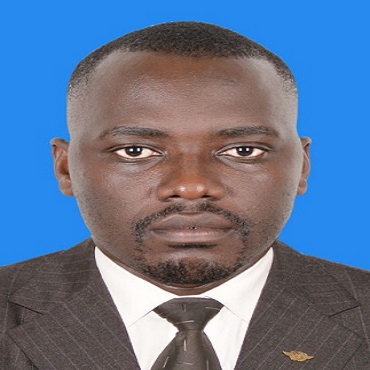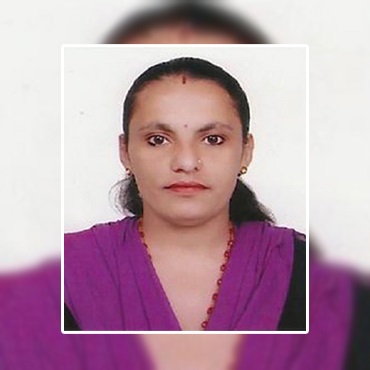Scientific Program
Keynote Session:
Title: Distribution of organic carbon in different soil fractions in grasslands
Biography:
Saman Herath is a Professor attached to Uva Wellassa University and conducts research under the scope of ‘soil carbon dynamics’. He has collaborative research work with different organizations. Saman has contributed to more than seventy scientific publications including two books. He has delivered scientific speeches in more than ten occasions in different countries. Saman has won several awards: President’s Awards in 2014 and 2015; NRC Merit Awards in 2012, 2013 and 2016. Vice Chancellor’s Award – 2017 for the Most Outstanding Senior Researcher by Uva Wellassa University. His PhD thesis was awarded as an ‘Exceptional PhD Thesis’; and included in the Dean’s List in Massey University. He is recognised as a Tier 04 Researcher as per the h-index. Also, Saman has received UWU Research Awards in 2014, 2015, 2016 and 2017. Currently, Saman serves as the Chairman/Research Committee and Editor-In-Chief/Journal of Agriculture and Value Addition, Uva Wellassa University.
Abstract:
Elucidating protective mechanisms and quantification of organic carbon (OC) in different pools are required for knowing the distribution pattern of OC in grasslands. An experiment was conducted to achieve the above objective using three contrasting soils under different climatic conditions with different vegetation types. Soils sampled at 0 – 10 and 10 – 20 cm depths from a desert grassland (LZ), a typical steppe (HX) and an alpine meadow (MQ) were physically fractionated into coarse free particulate organic matter (fPOM), fine fPOM, silt+clay and heavy fractions. The latter was further dispersed to separate the intra POM (iPOM) from silt+clay fraction. The two silt+clay fractions were subjected to acid hydrolysis with 6 N HCl and obtained chemically and biochemically protected pools. Irrespective of the soil depth, MQ showed significantly (P<0.05) greater OC content in fine fPOM, coarse fPOM and iPOM, over the LZ and HX. LZ had a significantly (P<0.05) lower OC content in silt+clay associated fraction after dispersion, however; the same fraction taken after wet sieving did not show a significant (P>0.05) difference. Total hydrolysable and non-hydrolysable fractions showed a similar pattern at the two depths: LZ showed a significantly (P<0.05) greater OC content in hydrolysable fraction over MQ and HX whereas MQ showed a significantly (P<0.05) greater OC content in the non-hydrolysable fraction, compared to LZ and HX. In LZ and HX, majority of the OC was chemically protected: 87.4 and 86.0% in LZ and 69.5 and 66.8% in HX for the 0 – 10 and 10 – 20 cm, respectively. In MQ, major protection mechanism was physical protection (iPOM): 47.2 and 41.7% for the 0 – 10 and 10 – 20 cm, respectively. MQ showed a significantly (P<0.05) greater total protected OC over the other two soils in both depths. As a conclusion, the soil type influenced on the soil OC content stored in different pools.
Title: Conventional Banana Breeding in Uganda: “Challenges and The Future of Application of Marker Assisted Selection
Biography:
Arinaitwe Ivan Kabiita is a banana breeder at the National Banana Research Programme of National Agricultural Research Organisation (NARO)-Uganda. Currently he is pursuing his Doctorate Degree in Genetics and Molecular Biology under Gates Foundation Scholarship and University (3rd yr) at the University of Malaya pursuing of Malaya, Malaysia. His topic of study is “Genetic Analysis of Resistance Against Fusarium oxysporum f. sp. cubense (Foc) in Selected Banana Populations Using Molecular Markers and Linkage Mapping Approaches”. Ivan undertakes the conventional part of research in Uganda and the molecular part of research at High Impact Research (HIR) at University of Malaya. Ivan holds a BSc. degree in Botany and Zoology from Makerere University-Uganda (2004-2007) and a Master of Science degree in Plant Breeding and seed Systems from Makerere University-Uganda (2012-2014) funded by the Alliance for the Green Revolution in Africa (AGRA) Scholarship in Collaboration with Bioversity International. Ivan worked as Laboratory technician at Agro-Genetic Technologies (AGT) banana tissue culture laboratory in between 2007-2008. Later, He worked with International Institute of Tropical Agriculture (IITA) - Uganda as Research Assistant, banana biotechnology department between 2008 and 2009. In 2009, Ivan joined National Banana Research programme under NARO-Uganda at National agricultural research laboratories (NARL) working as a banana breeder to date. The programme is mandated with improving banana mostly the East African Highland Bananas (EAHBs) and dessert bananas for farmer preferred traits such as yield and resistance to pests and diseases.
Abstract:
Banana is a major staple food for more than 20 million Ugandans with an annual domestic banana consumption of more than 400 kg/person and the highest in the world. Pests and diseases pose a great threat the future of sustainable banana production. Banana production in Uganda has reduced by more than 50% in the past decade. The National Banana Research Programme (NBRP) under National Agricultural Research Organisations (NARO)- Uganda’s objective is to develop hybrid banana varieties that with higher yield and better resistance to at least three of the target pests and diseases [Fusarium wilt (Fusarium oxysporum f. sp. cubensis (Foc), burrowing nematode (Rhadopholus similis) and banana weevils (Cosmoplites sordidus)] compared with the current local varieties grown by the farmers. As a result, several banana hybrids with multiple resistances have been developed and released to farmers through conventional breeding. Conventional breeding to develop new improved banana varieties is a complicated and time-consuming process (10-20yrs), but the farmers do not have the luxury of waiting as the banana crop is under serious threat from the three major pests and diseases. The project funded by the Bill & Melinda Gates Foundation (BMGF) and led by the International Institute of Tropical Agriculture (IITA) in collaboration NARO-Ugandan stepped in to assist the national banana breeding program work more efficiently and faster using advanced technologies such as molecular markers. Application of molecular markers will accelerate and or shorten banana breeding cycle through early identification of material resistant to various pests and diseases.
Oral Session 1:
- Oral Session I: Soil Geology| Morphology and Soil Management |Plant Science | Agriculture
Title: Visualization and quantification of nocturnal water fluxes in soil and roots.
Biography:
Faisal Hayat doing Ph.D in department of Soil Physics at University of Bayreuth, Germany. In my Ph.D research, I study the relation of leaf water potential and root water uptake under varying soil water contents. Drought is one of the main factors limiting plant growth and food production worldwide. Plants use different strategies to overcome drought, including numerous responses to continue water uptake at low soil water contents, to avoid water loss, and thereby minimize the reduction of yield and crop growth under drought. Understanding what processes allows plants to maintain root water uptake and root growth during drought is of paramount importance for designing drought tolerant crops.
Abstract:
Drought is one of the main factors limiting plant growth and food production worldwide. Understanding what processes allows plants to maintain root water uptake and root growth during drought is of paramount importance for designing drought tolerant crops. Hydraulic lift, defined as the transport of water from deep, wet soil layers to dry, upper soil layers through the root system, has been hypothesized to allow plants to maintain growth and transpiration during drought spells. Although Hydraulic lift (HL) is well accepted, its quantification remains challenging. Here, we used neutron radiography to trace the transport of deuterated water (D2O) from deep, wet soil layers to dry, upper soil layers through the root system of maize plant. The experiments were carried out with maize grown in silty soil in quasi 2-D aluminium slabs. The soil was partitioned in two layers separated by a coarse sand layer that allowed the roots to grow through but limited the water redistribution between the layers. We injected D2O in the bottom soil layers and imaged the root system in the upper soil lays overnight. We found that when the top layer was dry, water was taken up from the deep soil layers and it was released during night by the roots in the upper dry layer. Interestingly, we also found that the hydraulic redistribution within the root system enables the growth of new roots in the upper dry soil layers. This information is of fundamental importance to understand how root growth is maintained during drought. In summary, this study shows the potential of combining isotope with neutron radiography to estimate hydraulic lift, redistribution of water within the root system and maintenance of root growth in drying soils.
Title: The continuous and indiscriminate use of NPK fertilizers for longer periods resulted in the imbalance of nutrients in soil
Biography:
Kavitha Chandran is aproffesor from the Kerala Forest Research Institute and works in the Soil Science Department Peechi, Kerala.she published many papers and her resent research is on imbalance of nutrients in soil.
Abstract:
The continuous and indiscriminate use of NPK fertilizers for longer periods resulted in the imbalance of nutrients in soil. This nutrient imbalance in soil gradually reflected in crops, animals and human beings, leading to various degenerative and deficiency related diseases now more than ever. This necessitates site specific nutrient management for crops, which essentially rely upon evaluation of soil fertility status. Geographic Information System is an advanced technology for storing and displaying of data and understanding the status of soil fertility spatially and temporally. GIS based soil fertility mapping for assessing spatial variation and site specific nutrient management in a region are not yet attempted in Kerala. The soil fertility status in various agro ecosystems was assessed by collecting 5120 soil samples @ one sample per ha. These samples were analyzed for pH, electrical conductivity (EC), organic carbon (OC), macro and micro nutrients using standard procedures. Results revealed that soil fertility of Thrissur district varied widely between various agro ecosystems across different agro ecological units. The soils of various agro eco systems in general were extremely acidic to slightly alkaline, non saline to highly saline, with low to high status of organic carbon and all the macro and micro nutrients. The soil fertility assessment based on soil reaction index indicated that in all the agro ecosystems, soils were acidic except arecanut and pepper, wherein the soils were in neutral condition. The value on salt index revealed normal non saline condition in all the cropping systems in the study area. The status of OC, which was evaluated by nutrient index values were high in soils of nutmeg and rubber. In all other crops its status was moderate. The nutrient index values revealed high N status in the soils of rubber based cropping system, and medium in all other crops. The status of P was high in the soils of all agro ecosystems. The status of K was low in arecanut, high in rubber, and medium in all the other crops. Mg was medium in all the agro ecosystems in the study area. The status of S was high in the soils of rubber, vegetables and pepper. The decreasing order of deficiency of macronutrients were K (9.2 % - 58.7 %) > Ca (17.8 % - 41 %) > Mg (17.7 % - 38.5 %) > S (3.7 % - 13.9 %) > P (1.9 % - 20.7 %). The nutrient index values revealed very high status of Zn in the soils of nutmeg and paddy, and high in other agro ecosystems. Status of B was very low in the soils of all the cropping systems. On the other hand, Cu was very high in the soils of paddy and coconut, and high in other cropping systems. The status of Fe and Mn were very high in the soils of all the crops grown in Thrissur district. The decreasing order of deficiency of micronutrients in Thrissur district were B (99.3 % – 100 %) > Cu (61.5 % – 84.3 %) > Zn (64.4 % – 75.9 %) > Mn (1.6 % – 18.5 %) > Fe (0.1 % - 1.8 %).
The spatial variation of nutrients in the study area was assessed by using semivariogram method in kriging interpolation. The characteristics of semivariogram such as range (m), nugget, sill, partial sill, relative nugget effect (%) and spatial dependence were calculated. The best fit model was applied to the kriging interpolation according to the determination coefficient, which is the correlation of measured and predicted values on space. Finally, spatial distribution maps of all the variables were prepared. Among the variables analyzed, K (7%) and B (24%) revealed strong spatial dependence, Zn (78%) with weak spatial dependence and others with moderate spatial dependence. The results from the present study call to develop a strategy for site - specific management for the parameters showing moderate spatial dependence and weak spatial dependence. But for K and B, showing strong spatial dependence, only uniform management is needed because it was greatly affected by the structural factors such as climate, topography and parent material. Spatial variability of soil properties is essential for precision agriculture because soil parameters with little or no spatial dependence will not be conducive to site-specific management, and will be managed on the average. The information on the spatial variability of soil nutrients is useful for refining soil management practices, and for improving sustainable land use in Thrissur district.
The third objective mainly focused on developing the soil fertility map depicting the extent of deficiency and toxicities of nutrients in the study area. From the map of pH prepared for Thrissur district, it was found that extremely acidic soils were mainly distributed in pokkali and kole lands (91.91 km2). A large portion (1146.6 km2) of the study area were with moderately acidic soils (pH 5.6-6.0). The saline soils were mainly located in pokkali lands to an area of 18.07 km2 (0.6%) and the major area of the district extending to 2901.08 km2 (95.75%) was non saline. High content of OC was mainly concentrated in northern and southern high hills in an area of 1544.39 km2 (50.97%). High status of N was mainly located in the soils of high hills extending to an area of 1041.44 km2 (34.37%). The high levels of P was noted in majority of the area extending to 2940 km2 (97%). Low levels of K was mainly located in northern coastal plain and high levels in northern central laterite. Optimum level of Ca was noted in majority of the area extending to 2763.8 km2 (91.2%) and its deficiency was pronounced in pokkali and kole lands. Deficiency of Mg was pronounced in all the agro ecological zones of the district. S deficiency was observed only in 19 % of the area. Among the micronutrients, deficiency of B was severe extending to 99 % of the area in the district. Deficiency of Cu was noted only in 14.8% of the area. Deficiency of Mn was less prominent in the district extending to an area of 6 % (182.5 km2) in northern central laterite. Adequate level of Fe was observed in 99.96 % of the district revealing negligible deficiency.
In general, low soil fertility status in the study area was mainly located in the coconut prominent areas of the northern coastal plain. 41% of the area showed optimum soil fertility, which was most suitable for farming practices. The information generated from this study can serve as base line data for future nutrient management in this region.
Title: Effect Of Saathi organic fertilizer on performance of Wheat and Cauliflower
Biography:
Sabina Devkota is a Ph.D Researcher.Her interest areas of research is soil organic matters, Soil parameters, Effect of organic fertilizers etc.
Abstract:
A study on the effects of Saathi organic fertilizer on the nutrient status, growth and yield of wheat and cauliflower was conducted to assess the potential of this fertilizer in replacing the chemical fertilizer for wheat and cauliflower production. Both field trail was laid out in Randomized complete block design (RCBD) with 3 replications in Belachapi dhanusha .Results revealed that application of saathi organic fertilizer influence the thousand grain yield significantly and the highest thousand grain weight (49.2) was obtained from FYM (10 t/ha). Highest grain yield was obtained from the sathi 500 kg/ha while combined with ½ RDF. Soil organic matter and nitrogen were slightly increased with the application of Saathi organic fertilizer. In Cauliflower, Crop parameters like plant spread, curd spread, curd depth, plant height and leaf numbers of cauliflower were significantly influenced by the application of saathi organic manure. Curd yield and curd biomass was found highest from RDF followed by saathi + RDF. There is no significant influence on soil parameters like soil pH, organic matter, nitrogen, phosphorous and potassium content after harvest of cauliflower but there found the improvement in soil pH, slight increment in soil organic matter and nitrogen, sharp increment in soil potassium and lower response to soil phosphorous content.
Title: Effect of Powdered Date Palm Karab Waste on the Available Water Holding Capacity of a Saudi Arabian Sandy Soil
Biography:
Bandar is an Independent Researcher from Fadhel group in Dammam, Saudi Arabia. he published many papers.His interest of area of reserach is Soil Geology, Soil Morphology and Soil Management.
Abstract:
Water scarcity and the low fertility of sandy soils constitute major challenges that impede agriculture in various parts of Saudi Arabia. One approach to overcoming these hurdles is the use of moisture-retaining soil amendments. These amendments aim to enhance the poor available water holding capacity (AWHC) of sandy soils, which is a critical physical parameter that determines the required amount and frequency of irrigation water for a given soil. Currently, a variety of moisture-retaining soil amendments are commercially available and widely used, yet the quest for more sustainable, economical, efficient, and locally produced amendments continues.
A potential Saudi Arabian resource for producing such desired soil amendments is Karab, which is the Arabic name given to the pruned trunk waste of date palm trees (Phoenix dactylifera). The fate of the gigantic mass of Karab produced annually is to become landfill, either directly or after cindering. Therefore, this study investigated the potential use of Karab—obtained from two widely cultivated date palm cultivars, Khalas and Khunaizi—as a moisture-retaining soil amendment. The potential efficiency was measured by comparing the calculated AWHC for samples of powdered Karab mixed with sandy soil at different ratios to the AWHC of control samples consisting of neat sandy soil and neat powdered Karab.
The results revealed that the simple powdering of Karab to function as a moisture-retaining soil amendment offers a potential large-scale utilization of the waste. This use of Karab would consequently conserve precious irrigation water, enhance crop yields, and abate an enormous amount of greenhouse gas emissions.
Title: Establishment of herbal garden, herbal museum and herbarium for the collection and preservation of ethno-medicinal plants with special emphasis to the tribal plants of western Ghats.
Biography:
Jubin J Kurichiyil has completed his MSc at the age of 25 years from Mahathma Gandhi University, India. He is the Reasearch Head of Kurichiyil Ayurveda Hospital and Bio-Reasearch Centre, Idukki, Kerala,India.
Abstract:
present study investigated the Western Ghats, specifically the High Ranges of the district of Idukki , which is home to numerous medicinal plants. Of the approximately 5000 species of flowering plants found in the region, about 70% are claimed to be medicinal. These plants are being used as drugs by local community and tribal people of the region for generations. Due to the continued deforestation, accelerated climate changes, soil erosion and floods, the existence of most of these plants are endangered and some are on the verge of extinction. Even for the plants who are still abundant, the knowledge of the medicinal use of these plants are transmitted orally from one generation to the next among the local people, especially among the tribal community. The local people believe that the medicinal value of the plant will be lost if its usage is disclosed and are reluctant to disclose the usage to others, except to a very few close relatives. Uncontrolled loss of medicinal plants in Western Ghats negatively influence the healthcare system and biodiversity of India.The knowledge about the type and usage of most medicinal plants in Western Ghats has not been recorded or preserved properly. Therefore the conservation of medicinal plants is of utmost importance for future generation &sustainable use.
Therefore, it is high time to preserve the knowledge and the plants alike as both are endangered. As a college situated in the most backward tribal region of Idukki district with the mission of the upliftment of the local community, Pavanatma College, Murikkassery, Idukki, Kerala, India ,in collaboration with Kurichiyil Ayurvedic Hospital and Bio-Research Centre, Thadiyampadu, Idukki, Kerala, India, is committed to the preservation of the medicinal plants of the region and the indigenous knowledge of the medicinal values of these plants. With this objective, the college plans to establish a herbal garden for growing these plants in a scientific and systematic manner. As part of the project it is planned to establish a herbaria of medicinal plants and to prepare a library of photographs showing various stages of the plant growth. It is also planned to create a digital database listing the knowledge of the tribal and indigenous people by conducting extensive interviews and interface meetings with them.
Title: Evaluation of Urea Embedded Nano Silica to Enhance Nitrogen Use Efficiency in Rice–Wheat Sequence on Subtropical Mollisols of Northern India
Biography:
Shri Ram is working as Professor, Soil Science and has expertise in evaluation of nano materials to enhance nutrients use efficiency by crops. He has done lot of work on improving the soil fertility and soil quality and recently dealing as Principal Investigator of All India Coordinated Research Project on Long Term Fertilizer Experiments. This study opens a new pathway to researchers involve in enhancing nutrients use efficiency by rice and wheat crops.
Abstract:
Green house study was conducted for evaluation of mesoporous nano silica (mNS) loaded with urea under rice–wheat sequence on Mollisols of northern India. Study consisted N levels ( 0, 30, 60 ,90 and 120 kg ha-1) through ordinary urea and urea loaded mNS with uniform dose of P and K for both crops. Urea dissolved in magnetized distilled water (MDW) to enhance urea loading efficiency into mNS. Fourier Transform Infrared Spectroscopy (FTIR), Energy-dispersive X-ray (EDX), and Field Emission Scanning Electron Microscope (FESEM) used to characterized mNS. Results showed that growth, yield characteristics , yields and nutrients uptake by rice and wheat were more than double with nitrogen applied through mNS compared to N applied through ordinary urea. Whereas, lower doses of nitrogen @ 30 and 60 kg N ha-1 through urea loaded mNS resulted at par growth parameters, yield attributes, yields and nutrients uptake by rice and wheat compared to N applied @ 120 kg ha-1 through ordinary urea. Maximum increase in grain yields of rice (60.5%) and wheat (55.5 %) were by N applied @ 120 kg ha-1 through urea embedded mNS over N applied @ 120 kg ha-1 through ordinary urea followed by nitrogen applied @ 90 and 60 kg N ha-1 through urea embedded mNS. All treatments of urea embedded mNS, showed significant increase in available N, P, K and S in soils over control and nitrogen @ 30 and 60 kg N ha-1 through ordinary urea . Remarkable increase in root biomass and root volume occurred with urea loaded mNS compared N applied through ordinary urea over. It concluded that sustained release of nitrogen from the urea embedded mNS gave tremendous benefit to crops, which are preliminary indication but it opens doors to use nano materials as an efficient fertilizer material for saving nitrogen.
A PHP Error was encountered
Severity: 8192
Message: trim(): Passing null to parameter #1 ($string) of type string is deprecated
Filename: pastconference/past-program-schedule.php
Line Number: 354
Backtrace:
File: /efsdata/meetingsint-com/application/views/pastconference/past-program-schedule.php
Line: 354
Function: trim
File: /efsdata/meetingsint-com/application/controllers/Pastconference.php
Line: 128
Function: view
File: /efsdata/meetingsint-com/index.php
Line: 317
Function: require_once
Title: Effect of Powdered Date Palm Karab Waste on the Available Water Holding Capacity of a Saudi Arabian Sandy Soil
Biography:
Maryam Haroon AL-Soufi is a PhD student at the University of Putra, Malaysia. Her breadth of experience combines industry with academia; she worked for almost five years with Saudi Aramco Oil before joining Imam Abdulrahman Bin Faisal University in Saudi Arabia as a lecturer. She earned a master’s degree in biotechnology in 2002 from the Arabian Gulf University in the Kingdom of Bahrain. She holds a granted patent and has presented a number of conference papers and posters.
Abstract:
Water scarcity and the low fertility of sandy soils constitute major challenges that impede agriculture in various parts of Saudi Arabia. One approach to overcoming these hurdles is the use of moisture-retaining soil amendments. These amendments aim to enhance the poor available water holding capacity (AWHC) of sandy soils, which is a critical physical parameter that determines the required amount and frequency of irrigation water for a given soil. Currently, a variety of moisture-retaining soil amendments are commercially available and widely used, yet the quest for more sustainable, economical, efficient, and locally produced amendments continues.
A potential Saudi Arabian resource for producing such desired soil amendments is Karab, which is the Arabic name given to the pruned trunk waste of date palm trees (Phoenix dactylifera). The fate of the gigantic mass of Karab produced annually is to become landfill, either directly or after cindering. Therefore, this study investigated the potential use of Karab—obtained from two widely cultivated date palm cultivars, Khalas and Khunaizi—as a moisture-retaining soil amendment. The potential efficiency was measured by comparing the calculated AWHC for samples of powdered Karab mixed with sandy soil at different ratios to the AWHC of control samples consisting of neat sandy soil and neat powdered Karab.
The results revealed that the simple powdering of Karab to function as a moisture-retaining soil amendment offers a potential large-scale utilization of the waste. This use of Karab would consequently conserve precious irrigation water, enhance crop yields, and abate an enormous amount of greenhouse gas emissions.










